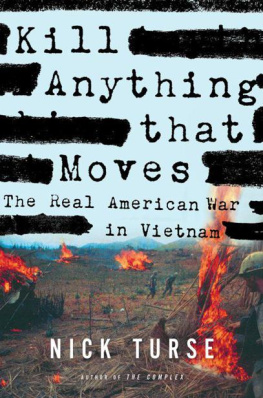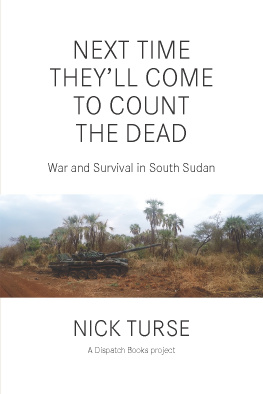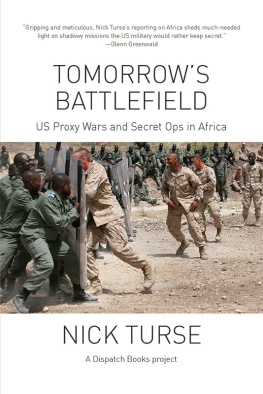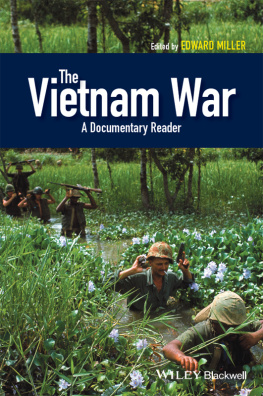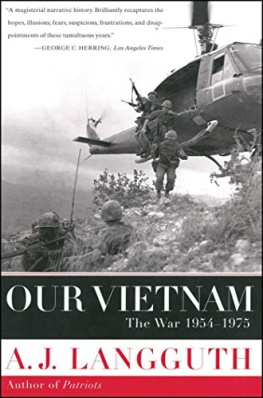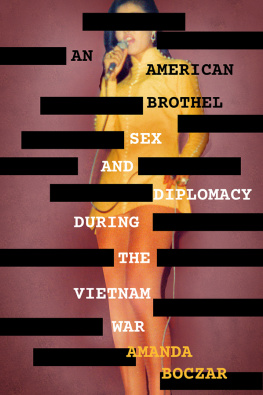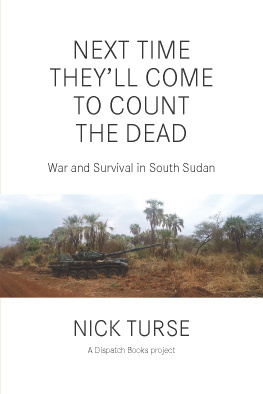
The author and publisher have provided this e-book to you for your personal use only. You may not make this e-book publicly available in any way. Copyright infringement is against the law. If you believe the copy of this e-book you are reading infringes on the authors copyright, please notify the publisher at: us.macmillanusa.com/piracy.
For all those who shared their storiesand for those with stories yet to be told.
CONTENTS
.
.
.
.
.
.
.

INTRODUCTION
AN OPERATION, NOT AN ABERRATION
On January 21, 1971, a Vietnam veteran named Charles McDuff wrote a letter to President Richard Nixon to voice his disgust with the American war in Southeast Asia. McDuff had witnessed multiple cases of Vietnamese civilians being abused and killed by American soldiers and their allies, and he had found the U.S. military justice system to be woefully ineffective in punishing wrongdoers. Maybe your advisors have not clued you in, he told the president, but the atrocities that were committed in Mylai are eclipsed by similar American actions throughout the country. His three-page handwritten missive concluded with an impassioned plea to Nixon to end American participation in the war.
The White House forwarded the note to the Department of Defense for a reply, and within a few weeks Major General Franklin Davis Jr., the armys director of military personnel policies, wrote back to McDuff. It was indeed unfortunate, said Davis, that some incidents occur within combat zones. He then shifted the burden of responsibility for what had happened firmly back onto the veteran. I presume, he wrote, that you promptly reported such actions to the proper authorities. Other than a paragraph of information on how to contact the U.S. Army criminal investigators, the reply was only four sentences long and included a matter-of-fact reassurance: The United States Army has never condoned wanton killing or disregard for human life.
This was, and remains, the American militarys official position. In many ways, it remains the popular understanding in the United States as a whole. Today, histories of the Vietnam War regularly discuss war crimes or civilian suffering only in the context of a single incident: the My Lai massacre cited by McDuff. Even as that one event has become the subject of numerous books and articles, all the other atrocities perpetrated by U.S. soldiers have essentially vanished from popular memory.
The visceral horror of what happened at My Lai is undeniable. On the evening of March 15, 1968, members of the Americal Divisions Charlie Company, 1st Battalion, 20th Infantry, were briefed by their commanding officer, Captain Ernest Medina, on a planned operation the next day in an area they knew as Pinkville. As unit member Harry Stanley recalled, Medina ordered us to kill everything in the village. Infantryman Salvatore LaMartina remembered Medinas words only slightly differently: they were to kill everything that breathed. What stuck in artillery forward observer James Flynns mind was a question one of the other soldiers asked: Are we supposed to kill women and children? And Medinas reply: Kill everything that moves.
The next morning, the troops clambered aboard helicopters and were airlifted into what they thought would be a hot LZa landing zone where theyd be under hostile fire. As it happened, though, instead of finding Vietnamese adversaries spoiling for a fight, the Americans entering My Lai encountered only civilians: women, children, and old men. Many were still cooking their breakfast rice. Nevertheless, Medinas orders were followed to a T. Soldiers of Charlie Company killed. They killed everything. They killed everything that moved.
Advancing in small squads, the men of the unit shot chickens as they scurried about, pigs as they bolted, and cows and water buffalo lowing among the thatch-roofed houses. They gunned down old men sitting in their homes and children as they ran for cover. They tossed grenades into homes without even bothering to look inside. An officer grabbed a woman by the hair and shot her point-blank with a pistol. A woman who came out of her home with a baby in her arms was shot down on the spot. As the tiny child hit the ground, another GI opened up on the infant with his M-16 automatic rifle.
Over four hours, members of Charlie Company methodically slaughtered more than five hundred unarmed victims, killing some in ones and twos, others in small groups, and collecting many more in a drainage ditch that would become an infamous killing ground. They faced no opposition. They even took a quiet break to eat lunch in the midst of the carnage. Along the way, they also raped women and young girls, mutilated the dead, systematically burned homes, and fouled the areas drinking water.
There were scores of witnesses on the ground and still more overhead, American officers and helicopter crewmen perfectly capable of seeing the growing piles of civilian bodies. Yet when the military released the first news of the assault, it was portrayed as a victory over a formidable enemy force, a legitimate battle in which 128 enemy troops were killed without the loss of a single American life.
Despite communiqus, radio reports, and English-language accounts released by the Vietnamese revolutionary forces, the My Lai massacre would remain, to the outside world, an American victory for more than a year. And the truth might have remained hidden forever if not for the perseverance of a single Vietnam veteran named Ron Ridenhour. The twenty-two-year-old Ridenhour had not been among the hundred American troops at My Lai, though he had seen civilians murdered elsewhere in Vietnam; instead, he heard about the slaughter from other soldiers who had been in Pinkville that day. Unnerved, Ridenhour took the unprecedented step of carefully gathering testimony from multiple American eyewitnesses. Then, upon returning to the United States after his yearlong tour of duty, he committed himself to doing whatever was necessary to expose the incident to public scrutiny.
Ridenhours efforts were helped by the painstaking investigative reporting of Seymour Hersh, who published newspaper articles about the massacre; by the appearance in Life magazine of grisly full-color images that army photographer Ron Haeberle captured in My Lai as the slaughter was unfolding; and by a confessional interview that a soldier from Charlie Company gave to CBS News. The Pentagon, for its part, consistently fought to minimize what had happened, claiming that reports by Vietnamese survivors were wildly exaggerated. At the same time, the military focused its attention on the lowest-ranking officer who could conceivably shoulder the blame for such a nightmare: Charlie Companys Lieutenant William Calley.
An army inquiry into the killings eventually determined that thirty individuals were involved in criminal misconduct during the massacre or its cover-up. Twenty-eight of them were officers, including two generals, and the inquiry concluded they had committed a total of 224 serious offenses.
The public response generally followed the official one. Twenty-five years later, Ridenhour would sum it up this way.
At the end of it, if you ask people what happened at My Lai, they would say: Oh yeah, isnt that where Lieutenant Calley went crazy and killed all those people? No, that was not what happened. Lieutenant Calley was one of the people who went crazy and killed a lot of people at My Lai, but this was an operation, not an aberration.
Looking back, its clear that the real aberration was the unprecedented and unparalleled investigation and exposure of My Lai. No other American atrocity committed during the warand there were so manywas ever afforded anything approaching the same attention. Most, of course, werent photographed, and many were not documented in any way. The great majority were never known outside the offending unit, and most investigations that did result were closed, quashed, or abandoned. Even on the rare occasions when the allegations were seriously investigated within the military, the reports were soon buried in classified files without ever seeing the light of day. Whistle-blowers within the ranks or recently out of the army were threatened, intimidated, smeared, orif they were luckysimply marginalized and ignored.
Next page
